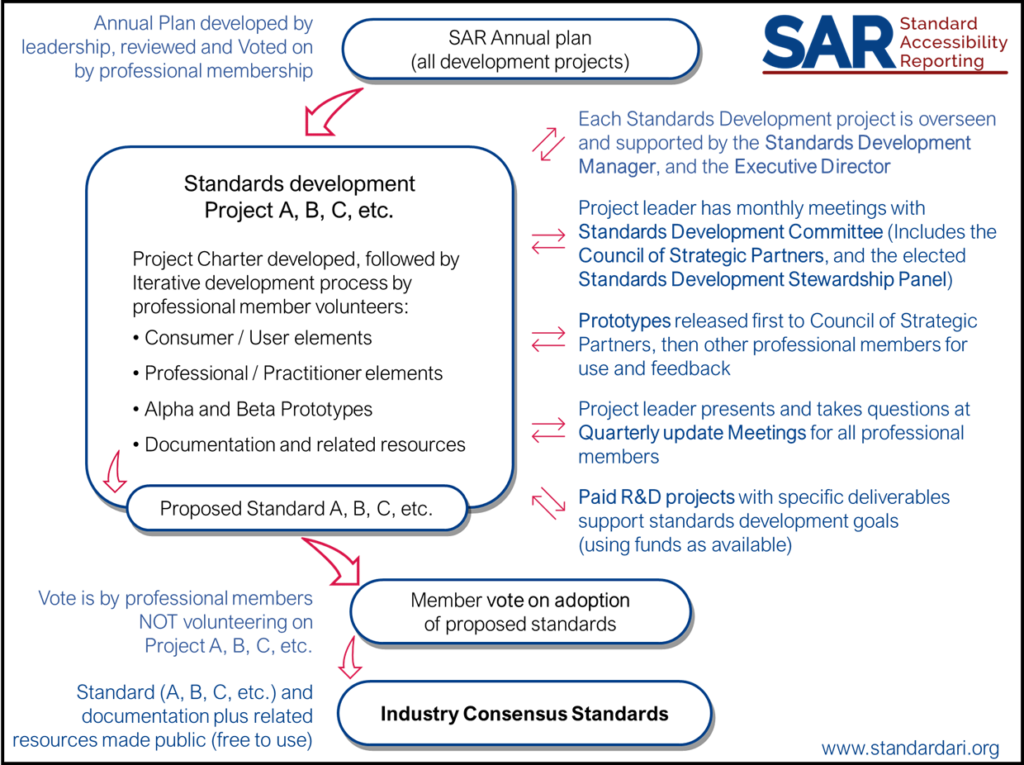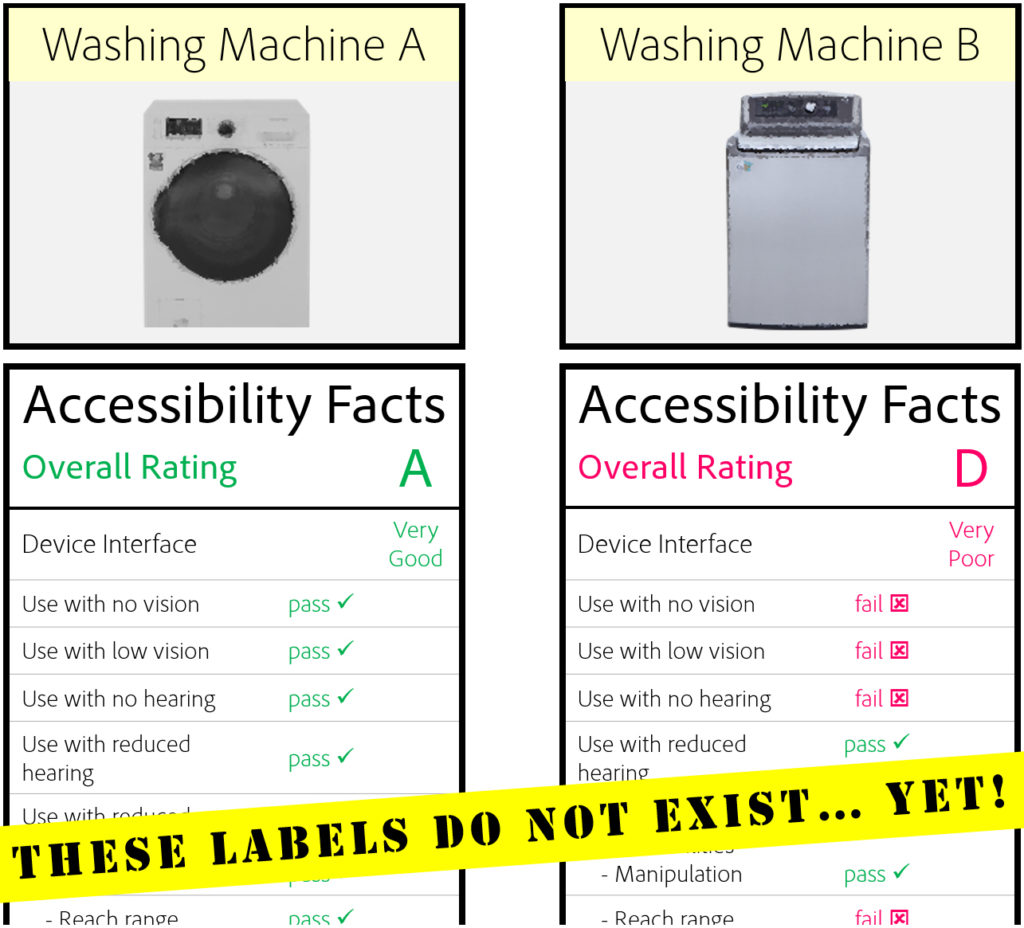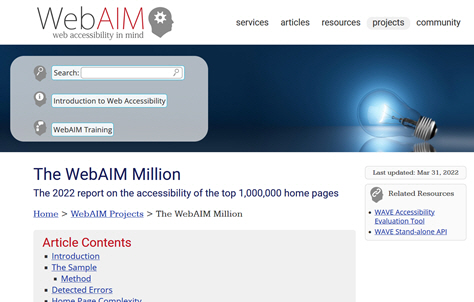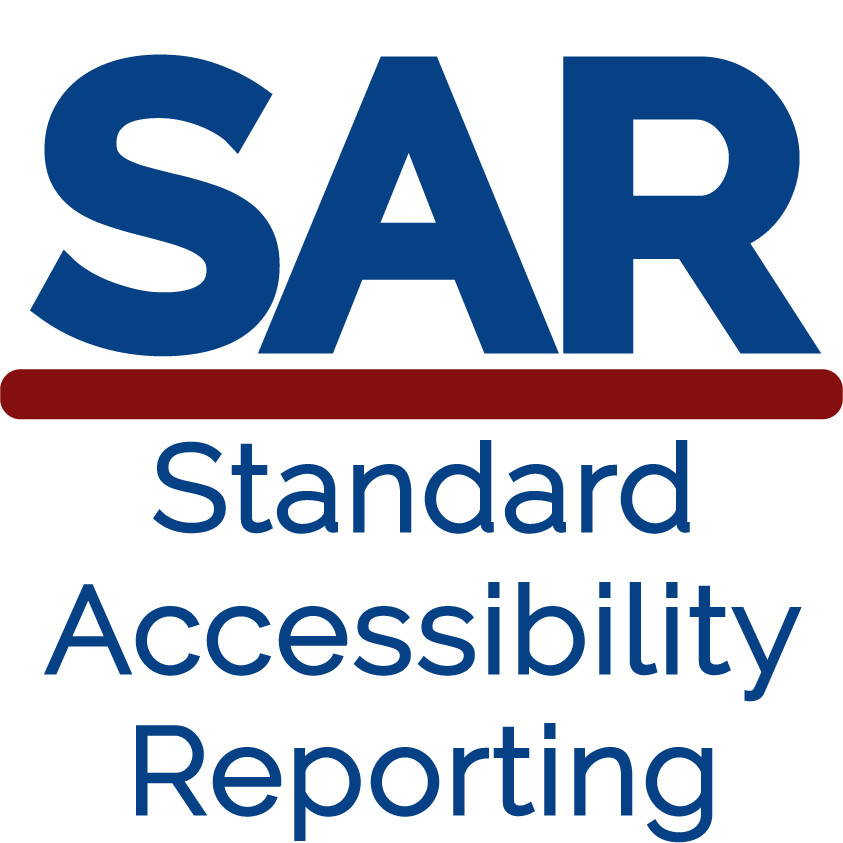Standards, testing, and reporting: the backbone of accessibility
How we develop standards (and why)
In order to have a uniform way to report on the accessibility of consumer technology products and digital content (e.g., websites, apps) we’ve developed a framework for our members to develop new standards.

At the center of our process is a member developed proposal for a standard, comprising:
- Consumer and user elements (what the potential customer will have access to in order to aid their purchasing decisions)
- Professional and practitioner elements (what is required by industry and testers in order to produce a reliable and valid score and label contents)
- Prototypes that members can try, examine, and provide feedback on throughout the development process
- Documentation and related resources for implementing and using the standard
Throughout this standards development process, the standards development manager and executive director assist members in their work. There is a project leader for every standard who meets monthly with the standards development committee. This committee also includes our Council of Strategic Partners and our member elected Standards Development Stewardship Panel. There are also quarterly meetings which involve the entire professional membership. Paid R&D projects (using available funds) can supplement the volunteer efforts of the standards development teams.
Our professional members vote on what becomes an industry consensus standard. Members vote on:
- The Annual Plan of which standards and related projects to work on;
- Adoption of proposed standards
- The leadership, including the board of directors and the stewardship panel.
At the end of the process, our standards will be published on our website for free use by all.
More details on our process are available in our Members’ Handbook.
Why are we developing these reporting standards?
For many reasons! Here are some of the main motivators behind our work:
The Market should not be this small
The consumer product marketplace is smaller than it should be

The accessibility testing field is growing; but the consumer product field needs a nudge in order to grow. Think about washing machines and other consumer household devices. They’re not accessible now, and so the accessibility testing field has an un-tapped market waiting for the right tipping point to come along.
One of our goals if to produce a standard test scoring system for consumer products, and to get mainstream technology review companies to adopt this system in their reporting. It won’t take too many ‘F’ ratings for manufacturers to seek advice on how to make their technologies accessible.
The website accessibility marketplace is smaller than it should be

If you work in the web accessibility field then you know about the annual WebAIM Million report. And you also know that this report tells us that just 3% of the world’s top websites can be considered “accessible”.
It’s not hard to determine that the internet is still fundamentally an un-tapped market.
One of our goals is to provide procurement officers the means to say “We want a web service provider who gets high standardized scores for accessibility that have been validated.” (Right now there is no standardized score and no standardized validation method for test processes. So we will make those happen.)
The Competition
How can you differentiate yourself from your competitors?
If all of the accessibility testing companies are using a different scoreboard, how can you declare yourself a winner?
How can you say with confidence that your test process is better than anyone else’s? How can your customers compare the scores you are giving them to the scores given by competitors? You are competing on quality and price, but nobody has a rulebook. Nobody really knows the score.
And why is this so important?
Not everyone is playing nicely
Some companies have bypassed the idea of quality (and truth and ethics) entirely, and are selling “the best”; “the fastest”‘; “the easiest” ways to “fix” accessibility. How do you prove this is just silicon snake oil without a standardized way to score how good a technology is in terms of accessibility. It’s just your word against theirs.
Our goal is to create a standardized scoring system, developed by and voted on by industry consensus of those who have striven to provide true levels of accessibility for people with disabilities.
In Summary
Our standards development is member-directed, member-involved, member-overseen, and member-voted.
You can get all of the benefits of membership.
The reasons why we are doing this are to help people working in the accessibility and technology field solve some of their biggest problems and pain-points.
We have only touched on a couple of the main issues in this short article. If you have additional pain-points around accessibility testing, we can help.
Let’s start a discussion.
Standard Accessibility Reporting, Inc. is a nonprofit scientific, charitable organization formed in 2022.
